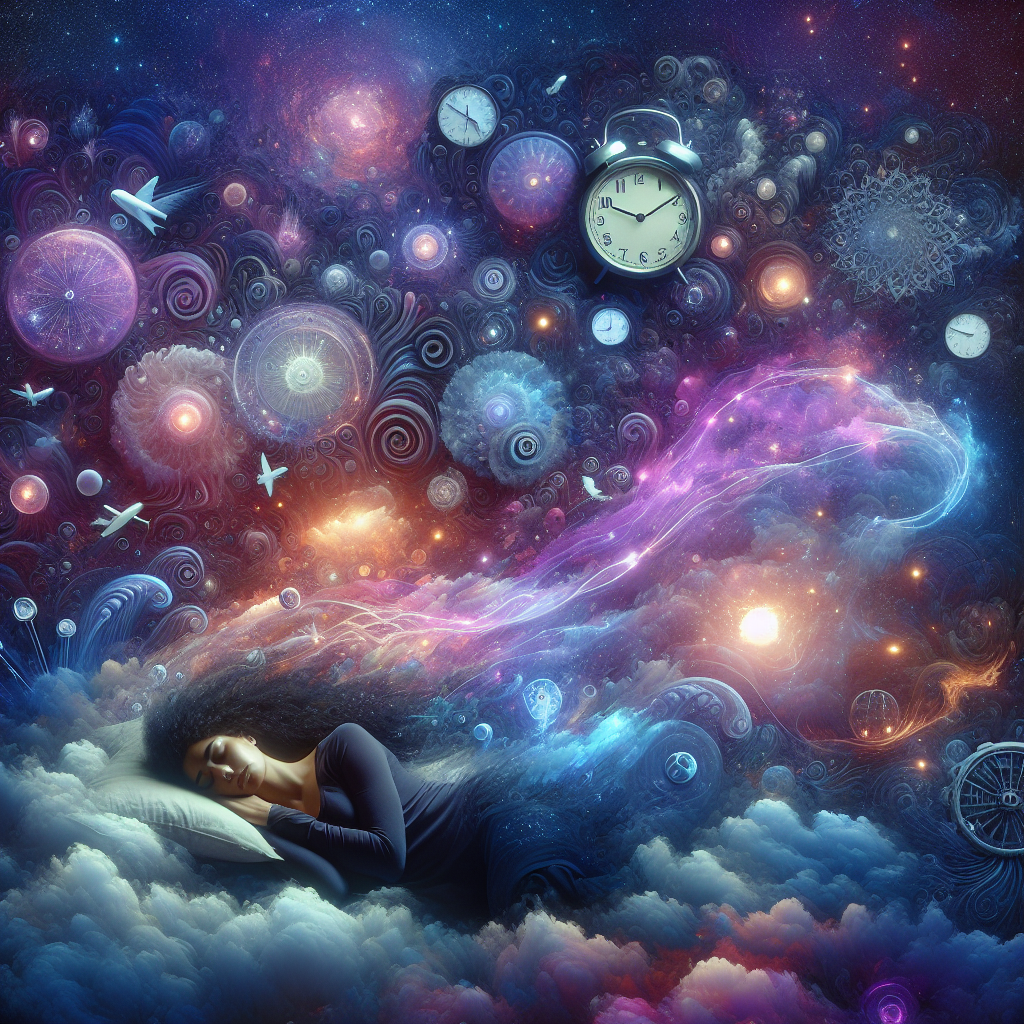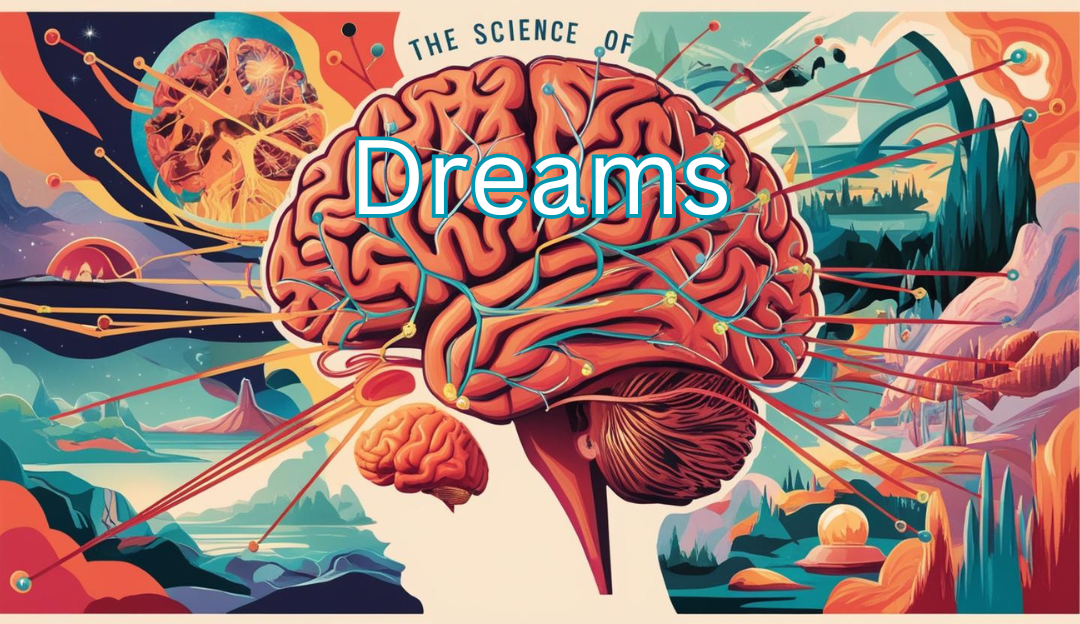The Enchanting World of Dreams
Dreams are a universal human experience, weaving a tapestry of mystery and wonder across the canvas of our minds. From the gentle whispers of ancient civilizations to the vibrant narratives of modern life, dreams have danced through history, leaving behind a trail of intrigue.
In every culture, dreams have been seen as bridges to other realms, offering glimpses into the divine, the unknown, and the depths of our own souls. They are the midnight symphonies that sing to us in the language of symbols and emotions.
As we delve deeper into the realm of sleep, we find that science, too, yearns to unravel the secrets of our nocturnal wanderings. What truths lie hidden in the folds of our dreams? Let us embark on this delicious journey of exploration and discovery.
The Science of Sleep and Dreams
REM Sleep
In the vibrant world of dreams, REM sleep is where the magic often unfolds. During this stage, our brains are alive with activity, weaving narratives and stirring emotions. It’s a time when the mind plays its most intricate symphonies.
“REM sleep is the theater where dreams take center stage, revealing the depths of our subconscious.”
Non-REM Sleep
Non-REM sleep, on the other hand, is the gentle foundation upon which our restful nights are built. It’s a time of restoration and quietude, preparing the mind for the colorful dance of REM.
| Feature | REM Sleep | Non-REM Sleep |
|---|---|---|
| Brain Activity | High | Low to Moderate |
| Dream Intensity | Vivid | Less Vivid |
Theories on Why We Dream
Why do we dream? It’s a question that dances on the edge of science and mystery. Some theories suggest dreams are a canvas for problem-solving, offering solutions to our waking dilemmas. Others propose they serve as a tapestry for memory processing, weaving the day’s threads into the fabric of our minds.
In this delicious exploration, dreams remain a portal to understanding not just our brains, but also our hearts and souls.
What Dreams Reveal About Our Minds
Dreams are like poetic whispers from our subconscious, revealing the emotions and thoughts we often tuck away during waking hours. They act as a mirror, reflecting our innermost feelings, fears, and desires. When we dream, our minds unfold stories that echo our waking experiences and imaginations.
Symbolism in dreams is a fascinating realm. For instance, dreaming about water might signify emotional depth, while flying often symbolizes freedom or escape. Here are some common dream symbols and their interpretations:
- Water: Emotions, subconscious mind
- Flying: Freedom, overcoming limitations
- Teeth falling out: Anxiety, loss of control
- Being chased: Avoidance, fear
Cultural and personal influences color our dreamscapes, adding unique flavors to each individual’s nightly journey. What one culture sees as an omen, another may view as a blessing. Personal experiences, too, shape the symbols and stories our minds create.
“Dreams hold the power to unlock the mysteries within us, guiding us toward understanding and growth.”
As we embrace these nocturnal narratives, we embark on a journey of self-discovery, where dreams serve as both compass and canvas.

The Delicious Art of Dream Interpretation
Dream interpretation has been a delicious pursuit throughout history, captivating the minds of thinkers from ancient times to the present day. The ancient Egyptians and Greeks saw dreams as divine messages, while Sigmund Freud introduced the idea of dreams as windows to our unconscious desires.
Today, modern scientific approaches bring a new flavor to understanding dreams. Researchers explore the cognitive processes involved, using brain imaging and psychological analysis to unravel the mysteries of our nightly adventures. This scientific lens complements traditional views, providing a more holistic understanding of what dreams can reveal.
Personal experiences play a vital role in dream analysis, adding unique spices to each dreamer’s interpretation. What one person sees as a simple dream about falling, another may relate to a deeply personal fear or challenge. Here’s a bite-sized comparison of interpretations:
| Dream | Traditional Interpretation | Modern Interpretation |
|---|---|---|
| Falling | Loss of control | Anxiety or stress |
| Being chased | Avoidance of a situation | Unresolved conflicts |
Delving into the art of dream interpretation invites us to savor the rich tapestry of our inner worlds, offering insights and reflections that nourish personal growth and self-awareness.
Personal Growth Through Dreaming
Dreams are a delicious gateway to self-reflection, offering a mirror to our innermost thoughts and emotions. By exploring the landscapes of our dreams, we can uncover insights that guide us on our journey of personal growth. As Carl Jung wisely noted, “Who looks outside, dreams; who looks inside, awakes.” Embracing this wisdom helps us tap into the transformative power of our dreams.
To harness dreams for self-reflection, it’s essential to remember and interpret them with care. Here are a few techniques to get started:
- Keep a dream journal: Write down your dreams immediately upon waking to capture details before they fade.
- Reflect on emotions: Focus on the feelings within the dream to uncover underlying themes.
- Look for patterns: Identify recurring symbols or scenarios to understand their significance.
By nurturing a deeper connection with our dreams, we open ourselves to a world of inspiration and self-discovery. These nightly visions can lead us to profound insights and enrich our lives, making each day a new adventure in understanding ourselves. For more on enhancing your journey of self-discovery, explore the concept of self-love.
Dreams as a Source of Inspiration
Dreams have long been a wellspring of inspiration, offering a canvas where our subconscious mind paints its boldest ideas. Throughout history, many figures have drawn creative genius from their dreams:
- Paul McCartney famously dreamt the melody for “Yesterday,” awakening with the tune fully formed in his mind.
- Mary Shelley envisioned the story of “Frankenstein” after a vivid dream, giving birth to a cornerstone of gothic literature.
- Albert Einstein credited a dream with sparking his thoughts on the theory of relativity.
“The dream is the workshop of the mind,” a wise saying that echoes the potential dreams hold for igniting creativity and solving problems. Dreams can break the chains of logical thinking, allowing us to explore possibilities without restraint.
A personal anecdote that illustrates this power: a friend once dreamt of a unique art technique, blending colors in a way she hadn’t considered. Upon waking, she tried it, leading to a successful series of paintings that transformed her artistic journey.
These nocturnal adventures are more than mere whims—they are the seeds of innovation and the sparks of change. Embrace your dreams as a guiding light, and let them illuminate the path to creativity.
Dream FAQ
Welcome to our Dream FAQ, where we unravel the mysteries of your nightly adventures.
Q: Why do we dream?
A: Dreams may serve many purposes, including emotional processing, memory consolidation, and problem-solving. Though theories vary, each suggests dreams are vital to our mental health.
Q: Can dreams predict the future?
A: While intriguing, the idea that dreams predict the future is largely a myth. Often, dreams reflect our hopes, fears, and experiences rather than prophetic messages.
Q: Why do some dreams feel so real?
A: During REM sleep, heightened brain activity makes dreams vivid and lifelike, engaging our senses and emotions more deeply.
Q: How can I remember my dreams better?
A: Keep a dream journal by your bed and jot down dreams immediately upon waking. This habit strengthens recall and deepens your connection to your dream world.
Q: What do recurring dreams mean?
A: Recurring dreams often highlight unresolved issues or persistent thoughts, inviting us to explore them in waking life for personal growth.
Embrace your dreams as a gateway to self-discovery, and let them guide your journey to understanding your inner self.
Final Thoughts: Embrace the Dream Journey
As we journey through the enchanting realm of dreams, we’ve uncovered their profound role in mirroring our emotions and thoughts, acting as a canvas for our deepest desires. They are not just random images but meaningful reflections of our mind’s inner workings. These nightly narratives carry the potential to inspire creativity, solve problems, and foster personal growth.
Embrace your dreams with open arms and a curious heart. Let them be a source of insight and a delightful adventure into the depths of your subconscious. Cherish them as a guiding star, illuminating paths to self-discovery and wisdom.
Live life to the fullest, with dreams as your compass, daring you to explore new possibilities and savor the delicious journey of existence.






Ever wonder why you’re chased by giant squirrels in your sleep or suddenly find yourself flying? Blame your brain! While you’re off in dreamland, your brainstem is busy sending wild electrical signals to your cortex, the part of your brain that makes sense of things. Since your logical brain is mostly snoozing, your creative side takes over, weaving these random signals into bizarre storylines. Meanwhile, your amygdala, the emotion center, throws in some feelings – maybe that’s why you’re terrified of the squirrel or thrilled to be soaring. It’s like your brain is putting on a wacky improv show, starring you, and the script is completely made up on the spot!